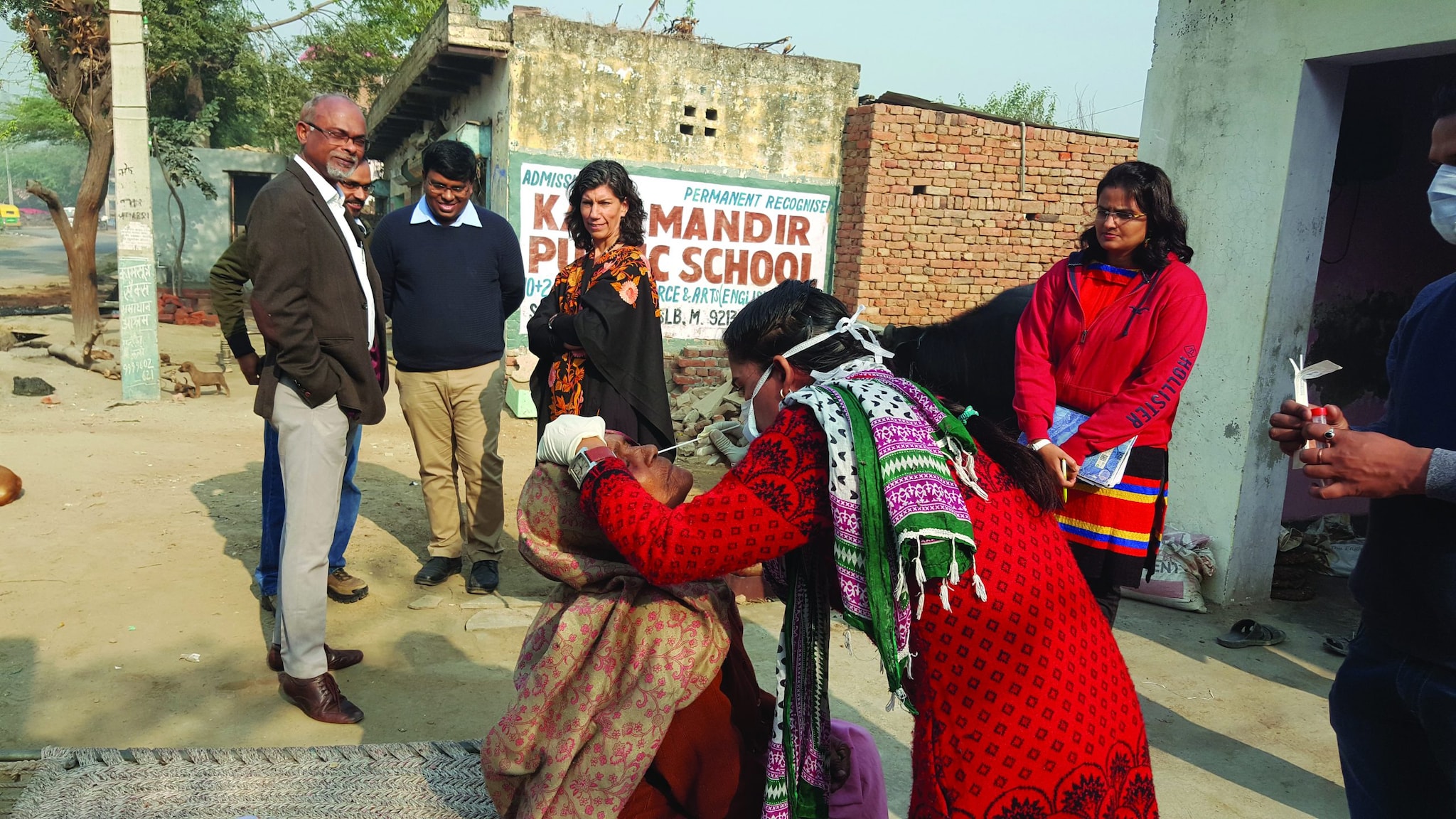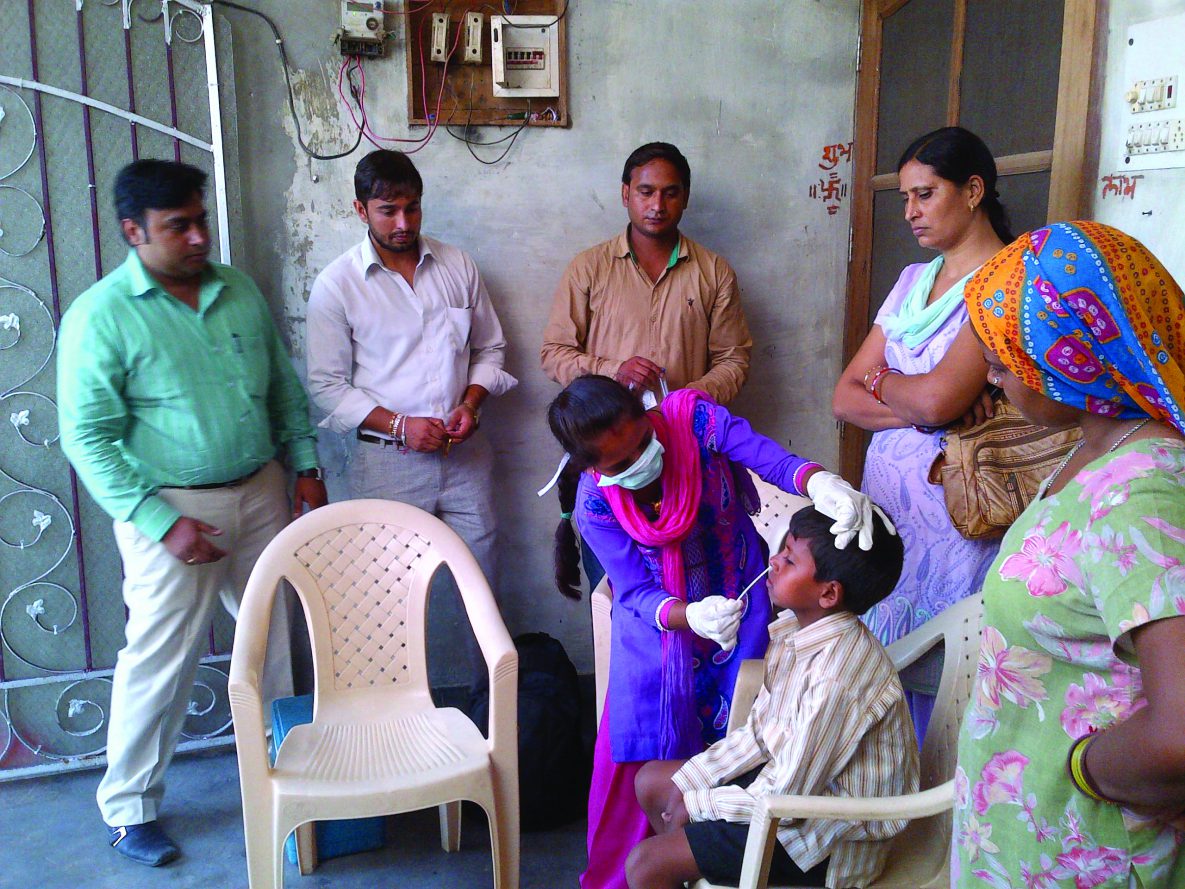Influenza

CDC team and All India Institute of Medical Sciences investigators watch as a project nurse collects a nasal specimen from a study participant with respiratory symptoms in Ballabgarh, Haryana, 2017 Photo credit: CDC India office
Since 2005, CDC has worked to support GOI influenza surveillance and research projects that generate evidence on the burden of influenza.
In India, influenza virus circulation usually peaks during monsoon season (June-September) with secondary peaks during winter (November-February). However, the actual timing of the influenza season varies across the country due to different climatic regions. GOI currently recommends annual influenza vaccination for high-risk groups, including healthcare workers, pregnant women, and people with chronic health conditions. Influenza vaccine is not currently available as part of routine public health services offered by the government.
Since 2005, CDC has worked to support GOI influenza surveillance and research projects that generate evidence on the burden of influenza. CDC-supported Indian Council of Medical Research (ICMR) surveillance network expanded from 5 to 10 sites across India and started using Reverse Transcription – Polymerase Chain Reaction (RT-PCR) tests to detect influenza virus.

Project staff taking respiratory specimen for influenza testing from a participant of influenza vaccine study Ballabgarh Haryana 2013. Photo credit: CDC India office
Accomplishments of CDC’s collaborative efforts include:
- The CDC-supported ICMR surveillance network was instrumental in the detection of H5N1 virus during the 2006-2008 outbreaks and the H1N1 pandemic virus in 2009
- Several CDC-supported epidemiological research projects with the All-India Institute of Medical Sciences and ICMR culminated with the publication of research articles in high-impact, peer-reviewed journals, adding to the evidence base for influenza prevention and control in India and globally
- Improved laboratory capacity for detection and characterization of influenza and respiratory viruses
- Characterized influenza seasonality across various geographies of India to inform vaccination timing
- Estimated burden of influenza among children, pregnant women, and older adults
- Demonstrated effectiveness of influenza vaccines among Indian children
- Partnered with the National Institute of Virology and WHO to support GOI’s current active role in the Global Influenza Surveillance and Response System
- Conducted multiple trainings for pandemic preparedness in partnership with ICMR and NCDC
- Built capacity for RT-PCR testing for influenza surveillance in 10 ICMR laboratories, many of which were the first to start RT-PCR for SARS-CoV-2 testing in India
- Distributed standardized multiplex diagnostic kits and standard operating procedures for SARS-CoV-2
- Collaborative research with GOI partners on influenza burden and seasonality that helps inform global efforts to prevent and control influenza
- Collaborated with WHO and other partners to strengthen indigenous manufacturing capacity for influenza vaccines at the Serum Institute of India, augmenting global supply and availability of vaccines
The Influenza program focuses on three main areas: strengthening the Influenza Surveillance Network, public health research, and pandemic preparedness. CDC collaborations with GOI partners aim to increase capacity of influenza sentinel surveillance sites and laboratory services for the timely detection and characterization of respiratory viruses with pandemic potential. The public health research helps assess influenza burden (e.g., hospitalizations, mortality, and estimated cost) and informs critical preventive and control measures through improved understanding of the epidemiology of respiratory pathogens.